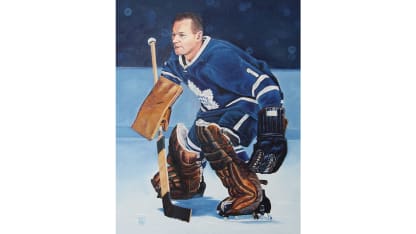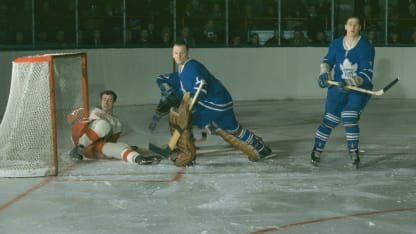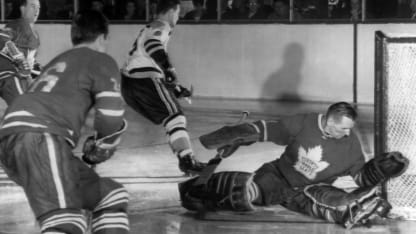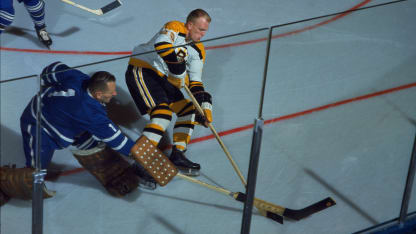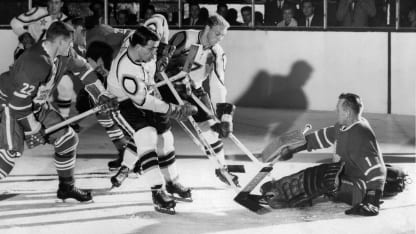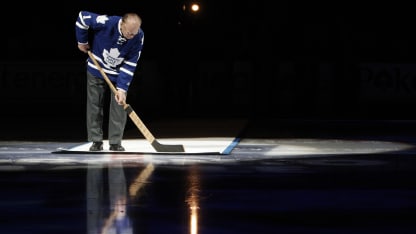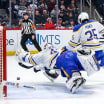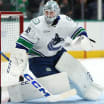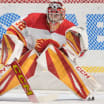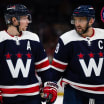"Johnny Bower was the best standup goaltender I'd ever seen, even better than Turk Broda," former Maple Leafs forward Howie Meeker said on the "Legends of Hockey" TV series. "He played his angles better than anybody else, he stood on his feet better than anybody else, and he stopped the puck very, very well."
"Johnny Bower was the hardest goalie to deke in the entire league," Montreal Canadiens center Jean Beliveau wrote in his autobiography. "He would simply refuse to go for a move. As a result, he was difficult to score against on a breakaway. He positioned himself in such a way that he drew you toward him almost as if you were moving down a funnel."
JOHNNY BOWER CAREER TOTALS | View Full Stats
Games: 552 | Wins: 250 | Losses: 195 | Ties: 90 | GAA: 2.51
Warm and fun-loving, Bower was immensely popular with fans and teammates, universally praised as both a competitor and a gentleman. He was born John Kiszkan, but changed his name to Bower following what he called a "separation in the family in my youth." He selected the new surname himself, although he didn't legally change it until he had already played pro hockey for a season with the Cleveland Barons of the American Hockey League.
Bower and his friends in Prince Albert, Saskatchewan, played shinny on rivers, lakes and any patch of natural ice he could find during the long prairie winters where, he said, the temperature routinely hit 45 below zero. He didn't mind standing in front of the goal, however, believing it was less dangerous than the forwards who got bounced around.
"I didn't want any part of that," Bower wrote in his autobiography. "I'm going to stay in goal, I figured. It's easy as pie. As I got older, I started to realize it wasn't so easy after all."


